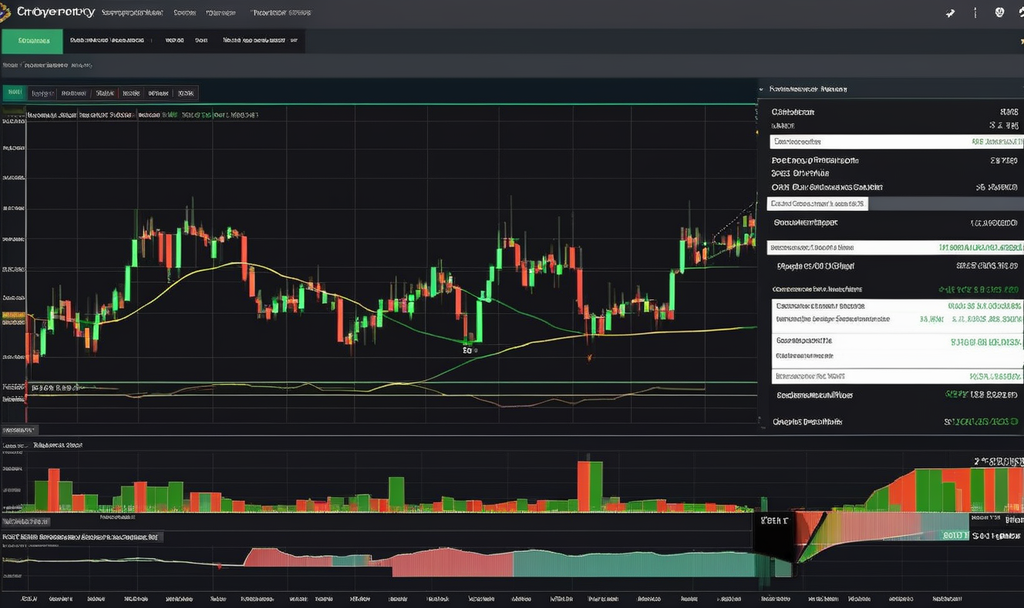Cryptocurrency investment has gained immense popularity in recent years, drawing both seasoned investors and newcomers into the thrilling world of digital assets. While traditional investment strategies often revolve around fundamental analysis, the volatile nature of cryptocurrencies demands a more dynamic approach. In this blog post, we’ll explore the significance of optimizing portfolio allocation through the lens of technical analysis, offering insights into how investors can make informed decisions to maximize returns.
Understanding Portfolio Allocation
Before delving into the role of technical analysis, it’s crucial to grasp the concept of portfolio allocation. Essentially, portfolio allocation refers to the distribution of assets within an investment portfolio. The goal is to achieve a balance that aligns with an investor’s risk tolerance, financial goals, and time horizon. In the context of cryptocurrency, this becomes even more pertinent due to the market’s notorious price volatility.
The Key Role of Technical Analysis
Technical analysis involves evaluating historical price and volume data to forecast future price movements. While fundamental analysis considers factors like a project’s whitepaper, team, and market potential, technical analysis focuses on charts and patterns. Incorporating technicals into portfolio optimization can provide a more nuanced understanding of market trends and potential entry or exit points.
Identifying Trends with Moving Averages
One powerful tool in a technical analyst’s arsenal is the moving average. This indicator smoothens price data to create a single flowing line, making it easier to identify trends. Traders often use the intersection of short-term and long-term moving averages as a signal for potential trend reversals. By paying attention to these crossovers, investors can optimize their portfolio allocation by adjusting their positions based on the prevailing market sentiment.
Relative Strength Index (RSI) for Market Momentum
Another key aspect of technical analysis is assessing market momentum. The Relative Strength Index (RSI) is a popular indicator that measures the magnitude of recent price changes to evaluate overbought or oversold conditions. By incorporating RSI into portfolio optimization, investors can avoid assets that may be overvalued and identify potential buying opportunities in oversold conditions.
Chart Patterns: Unveiling Opportunities
Chart patterns, such as triangles, flags, and head and shoulders formations, can offer valuable insights into potential price movements. Recognizing these patterns enables investors to optimize their portfolio allocation by adjusting positions based on the anticipated direction of the market. For instance, a breakout from a bullish triangle pattern might prompt an investor to increase exposure to a particular cryptocurrency.
Risk Management through Support and Resistance Levels
Successful portfolio optimization involves not only maximizing returns but also minimizing risk. Support and resistance levels, identified through technical analysis, play a crucial role in risk management. By setting stop-loss orders and take-profit levels based on these key levels, investors can safeguard their portfolios from sudden price fluctuations.
Diversification: A Crucial Element
Diversification is a fundamental principle of portfolio allocation that holds true in the cryptocurrency space as well. Rather than putting all eggs in one basket, spreading investments across different assets can help mitigate risk. Technical analysis aids in identifying uncorrelated assets, allowing investors to optimize their portfolio allocation for a more balanced and resilient investment strategy.
Incorporating Fundamental Analysis with Technicals
While technical analysis is invaluable in optimizing portfolio allocation, it should not be used in isolation. Combining it with fundamental analysis can provide a comprehensive view of potential investments. For instance, a cryptocurrency showing strong technical indicators may still be a risky investment if its fundamentals are weak. Striking a balance between technicals and fundamentals is essential for a well-rounded approach to portfolio optimization.
The Pitfalls of Emotional Trading
Emotions can cloud judgment and lead to irrational decision-making, particularly in the volatile cryptocurrency market. Portfolio optimization requires a disciplined approach, sticking to predetermined strategies based on technical and fundamental analyses. Emotional reactions to market fluctuations can result in impulsive trades that undermine the carefully planned allocation strategy.
Staying Informed: A Continuous Process
The cryptocurrency market is dynamic, with new projects, technologies, and market trends emerging regularly. Portfolio optimization is not a one-time task but a continuous process that requires staying informed about market developments. Regularly updating analyses based on the latest information ensures that an investor’s portfolio remains aligned with current market conditions.
If you have any question about this article, please contact us …
You can easily create a free cryptocurrency wallet with binance …
Conclusion: A Dynamic Approach to Success
In conclusion, optimizing portfolio allocation in the cryptocurrency space demands a dynamic and informed approach. Technical analysis, with its array of tools and indicators, serves as a valuable guide for investors seeking to navigate the ever-changing market landscape. By understanding trends, identifying opportunities, and managing risks, investors can enhance their chances of success in the exciting realm of cryptocurrency investment. Remember, a well-optimized portfolio is not static but adapts to market dynamics, making it a key element in the journey toward financial success in the crypto space.

